Pass Your CompTIA Network+ Certification Easy!
CompTIA Network+ Certification Exams Questions & Answers, Accurate & Verified By IT Experts
Instant Download, Free Fast Updates, 99.6% Pass Rate.

$69.99
Download Free CompTIA Network+ Practice Test Questions VCE Files
| Exam | Title | Files |
|---|---|---|
Exam N10-009 |
Title CompTIA Network+ |
Files 1 |
CompTIA Network+ Certification Exam Dumps & Practice Test Questions
Prepare with top-notch CompTIA Network+ certification practice test questions and answers, vce exam dumps, study guide, video training course from ExamCollection. All CompTIA Network+ certification exam dumps & practice test questions and answers are uploaded by users who have passed the exam themselves and formatted them into vce file format.
CompTIA Network+ Unlocked: Skills, Security, and Career Opportunities
In the fast-paced world of information technology, networks form the backbone of almost every organization. From small businesses to multinational corporations, networks enable communication, data sharing, and connectivity that drive productivity and innovation. For IT professionals, understanding how networks operate and how to manage them effectively is not just an advantage—it is a necessity. This is where the CompTIA Network+ certification comes into play. Designed to validate networking skills and knowledge, this certification is widely recognized and respected across the industry.
The CompTIA Network+ certification is vendor-neutral, meaning it focuses on concepts and practices that apply across different hardware and software environments. Unlike certifications tied to specific vendors, such as Cisco or Microsoft, Network+ equips professionals with skills that are applicable to a broad range of networking technologies. This flexibility makes it an ideal starting point for anyone pursuing a career in IT networking.
Beyond its technical value, earning the Network+ certification demonstrates to employers that a candidate has a well-rounded understanding of network concepts, infrastructure, operations, security, and troubleshooting. It establishes credibility, opens doors to career opportunities, and can serve as a stepping stone to more advanced certifications and higher-level roles.
The Importance of Networking in Modern IT
Networking is more than just connecting computers. Modern networks support a wide variety of devices and services, including cloud computing, mobile technology, Internet of Things (IoT), and enterprise applications. With businesses relying heavily on digital infrastructure, the demand for skilled networking professionals has never been higher.
A solid foundation in networking allows IT professionals to design efficient networks, ensure smooth operations, and quickly resolve issues when they arise. It also provides the knowledge needed to secure networks against cyber threats, maintain performance under heavy loads, and support business continuity. By earning the Network+ certification, professionals signal that they possess these essential skills.
Core Skills Covered by Network+
The CompTIA Network+ certification covers a range of core skills that are essential for networking professionals. These skills include understanding network architectures, managing network devices, implementing security protocols, troubleshooting network issues, and maintaining network operations. Here is a closer look at what professionals learn through Network+.
Network Architecture
Understanding how networks are structured is fundamental to any IT professional. Network+ teaches candidates about different types of network topologies, such as star, mesh, ring, and hybrid. It also covers the differences between local area networks (LANs), wide area networks (WANs), metropolitan area networks (MANs), and wireless networks. By mastering these concepts, professionals can design networks that are efficient, scalable, and reliable.
Networking Protocols
Protocols are the rules that govern how devices communicate over a network. Network+ provides a comprehensive overview of essential protocols, including TCP/IP, UDP, HTTP, HTTPS, FTP, SMTP, DNS, and DHCP. Understanding these protocols allows professionals to configure network devices, troubleshoot communication issues, and ensure that data flows smoothly between devices and applications.
Network Hardware
Network+ also covers the physical components that make networks work. Candidates learn about routers, switches, firewalls, access points, cables, and other essential devices. This knowledge is critical for tasks such as installing and configuring devices, monitoring network performance, and diagnosing hardware-related issues.
Network Security
With cyber threats becoming increasingly sophisticated, network security is a critical area of expertise. Network+ teaches professionals about firewalls, VPNs, access control lists, encryption, and authentication methods. Understanding security principles allows IT professionals to protect sensitive data, prevent unauthorized access, and maintain the integrity of network systems.
Troubleshooting and Operations
No network is immune to problems. Network+ equips candidates with the skills to troubleshoot connectivity issues, diagnose performance problems, and implement solutions. It also covers network monitoring, maintenance, disaster recovery, and business continuity planning. These skills are essential for keeping networks running smoothly and minimizing downtime.
Who Should Pursue Network+ Certification
Network+ is designed for a wide range of IT professionals, from those just entering the field to experienced technicians seeking formal validation of their skills. Entry-level network technicians, IT support specialists, and system administrators all benefit from obtaining this certification. It is particularly valuable for individuals aiming to specialize in network administration, security, or infrastructure management.
For newcomers to IT, Network+ provides a solid foundation that can lead to further certifications and career growth. For those already working in IT, it offers a way to formalize experience and enhance credibility. Many employers consider Network+ certification a prerequisite for technical roles, and it often leads to increased responsibilities, better pay, and greater career opportunities.
The Structure of the Network+ Exam
The CompTIA Network+ exam is designed to test both theoretical knowledge and practical skills. It typically includes a combination of multiple-choice questions, performance-based simulations, and scenario-based questions. The exam covers five primary domains: network architecture, network operations, network security, troubleshooting, and industry standards. Candidates are assessed on their ability to understand concepts, apply knowledge, and solve real-world networking problems.
Preparing for the exam requires a balanced approach that combines study materials, practice exams, and hands-on experience. Many candidates benefit from using lab simulations or setting up small networks at home to reinforce concepts. Time management, test-taking strategies, and familiarity with the types of questions asked on the exam are also important for success.
Benefits of Vendor-Neutral Certification
One of the key advantages of Network+ is its vendor-neutral approach. Unlike vendor-specific certifications, Network+ focuses on concepts and skills that apply to multiple technologies and platforms. This means that professionals who earn this certification can work with a variety of network devices and systems without being limited to a specific brand or product.
This versatility is especially valuable in organizations that use diverse networking equipment or transition between technologies. It also provides a strong foundation for advanced certifications, whether in network security, cloud computing, or vendor-specific tracks. By understanding core networking principles, certified professionals are better equipped to adapt to new technologies as they emerge.
Real-World Applications of Network+ Skills
The skills gained through Network+ certification are directly applicable in real-world IT environments. Professionals can configure and manage routers and switches, implement security measures, troubleshoot connectivity issues, and monitor network performance. These capabilities are essential for ensuring that networks remain reliable, secure, and efficient.
For example, a network technician may use Network+ knowledge to identify the source of a slow connection, reconfigure a switch to optimize traffic flow, or set up a VPN for remote workers. System administrators can apply these skills to maintain server connectivity, implement access controls, and ensure seamless integration between different network components. In every case, Network+ equips professionals with the tools they need to solve practical networking problems.
Career Opportunities and Growth
CompTIA Network+ opens doors to a variety of IT roles, including network technician, IT support specialist, systems administrator, and network analyst. These positions often serve as entry points into more specialized careers, such as network engineering, cybersecurity, cloud networking, or IT management.
Salaries for Network+ certified professionals vary based on experience, location, and role, but certification generally leads to higher earning potential compared to non-certified peers. Additionally, many employers value certification when considering promotions or additional responsibilities, making Network+ an investment not just in knowledge, but in long-term career growth.
Preparing for Success
Success in the Network+ exam requires a combination of study, practice, and hands-on experience. Candidates should begin by familiarizing themselves with the exam objectives and domains. Using study guides, video tutorials, and practice exams can help reinforce key concepts and identify areas that need improvement.
Hands-on practice is equally important. Setting up small networks, configuring devices, and troubleshooting problems provide practical experience that is invaluable on the exam. Time management during study sessions, maintaining a consistent study schedule, and reviewing difficult topics regularly also contribute to exam readiness.
The CompTIA Network+ certification is more than a credential—it is a comprehensive validation of networking knowledge and skills. It equips IT professionals with the ability to design, manage, and secure networks, while also providing a foundation for career growth and advancement. Whether you are just starting your IT journey or looking to formalize and expand your experience, Network+ offers a pathway to success in the ever-evolving field of networking.
By understanding core networking concepts, mastering practical skills, and applying knowledge in real-world environments, certified professionals become valuable assets to any organization. With increasing reliance on digital infrastructure, the demand for skilled networking professionals continues to grow, making Network+ an essential stepping stone for anyone pursuing a career in IT.
Understanding Core Networking Concepts
A strong grasp of core networking concepts is essential for anyone pursuing a career in IT. Networks are the foundation of modern technology, allowing computers, devices, and applications to communicate seamlessly. The CompTIA Network+ certification emphasizes understanding these core principles, equipping professionals to manage, troubleshoot, and optimize networks effectively. This article explores key networking concepts in detail, providing a solid foundation for both newcomers and experienced IT professionals.
The OSI Model and Its Importance
The OSI (Open Systems Interconnection) model is a conceptual framework used to understand how network protocols interact across different layers. It divides network communication into seven layers, each with distinct functions:
Physical Layer – Handles the physical connection between devices, including cables, switches, and hardware signals.
Data Link Layer – Manages node-to-node communication and error detection through mechanisms like MAC addressing.
Network Layer – Responsible for logical addressing and routing data between devices, primarily through IP addresses.
Transport Layer – Ensures reliable data transfer, sequencing, and error correction using protocols such as TCP and UDP.
Session Layer – Establishes, manages, and terminates communication sessions between applications.
Presentation Layer – Converts data into a readable format, handling encryption, compression, and translation.
Application Layer – Interfaces directly with software applications, enabling users to interact with network services.
Understanding the OSI model allows IT professionals to troubleshoot network issues systematically. By identifying which layer a problem originates from, technicians can narrow down causes quickly and efficiently.
TCP/IP Model and Networking Protocols
While the OSI model provides a theoretical framework, the TCP/IP model is more practical and widely used in real-world networking. It consists of four layers: Network Interface, Internet, Transport, and Application. Each layer corresponds to functions in the OSI model but is simplified for practical implementation.
Key networking protocols are integral to the TCP/IP model:
TCP (Transmission Control Protocol) – Provides reliable, ordered data delivery.
UDP (User Datagram Protocol) – Enables faster, connectionless communication for applications that can tolerate some data loss.
IP (Internet Protocol) – Handles addressing and routing of data packets.
HTTP/HTTPS – Facilitate web communication.
DNS (Domain Name System) – Resolves domain names to IP addresses.
DHCP (Dynamic Host Configuration Protocol) – Automatically assigns IP addresses to devices on a network.
A thorough understanding of these protocols allows professionals to configure networks correctly, identify issues, and ensure smooth communication between devices.
Network Topologies
Network topology refers to the physical or logical arrangement of devices within a network. Choosing the appropriate topology impacts network performance, reliability, and scalability. Common topologies include:
Star – Devices connect to a central hub or switch. Easy to manage but dependent on the central device.
Mesh – Devices are interconnected, providing redundancy and fault tolerance. Often used in large networks.
Ring – Devices are connected in a circular fashion, with data traveling in one or both directions. Efficient but sensitive to device failure.
Bus – All devices share a single communication line. Simple but prone to congestion.
Hybrid – Combines elements of multiple topologies to meet specific needs.
Understanding topologies helps IT professionals design networks that balance performance, cost, and reliability.
IP Addressing and Subnets
IP addressing is the method of assigning unique identifiers to devices on a network. There are two main versions: IPv4, which uses a 32-bit address format, and IPv6, which uses 128-bit addresses to accommodate the growing number of devices.
Subnetting divides a larger network into smaller, manageable segments. Subnets improve performance, enhance security, and simplify network management. Understanding how to calculate subnets and determine valid host ranges is a critical skill for network professionals.
For example, a network with the address 192.168.1.0/24 has 256 IP addresses, with 254 usable for devices. Subnetting can split this network into smaller subnets, each serving a different department or location, ensuring efficient IP allocation and better traffic management.
Network Hardware Essentials
Networking relies heavily on hardware components that facilitate data transmission. Key devices include:
Routers – Direct data between different networks, making intelligent routing decisions based on IP addresses.
Switches – Connect multiple devices within a single network segment and manage data traffic efficiently.
Hubs – Simple devices that broadcast data to all connected devices, less efficient than switches.
Access Points – Provide wireless connectivity for devices on Wi-Fi networks.
Firewalls – Monitor and control incoming and outgoing network traffic to enhance security.
Familiarity with these devices, their functions, and configurations is essential for building, managing, and troubleshooting networks.
VLANs and Segmentation
Virtual LANs (VLANs) allow network administrators to segment a physical network into multiple logical networks. Each VLAN acts as a separate network, improving security, performance, and traffic management. For instance, separating guest devices from internal corporate devices reduces security risks and prevents network congestion.
Segmentation also enables better control of broadcast traffic, ensuring that communication within one VLAN does not interfere with others. This concept is particularly important in larger networks or organizations with multiple departments.
Wireless Networking
Wireless networks are a critical part of modern IT infrastructure. Network+ covers the basics of wireless standards, encryption methods, and configurations. Key topics include:
Wi-Fi standards (802.11a/b/g/n/ac/ax) – Define speed, frequency, and range.
SSIDs (Service Set Identifiers) – Identify wireless networks.
Encryption protocols (WEP, WPA, WPA2, WPA3) – Protect wireless communication.
Signal interference and optimization – Managing coverage, minimizing dead zones, and improving performance.
Wireless networking knowledge is essential for designing and maintaining reliable networks, especially as more devices rely on Wi-Fi connectivity.
Network Troubleshooting Fundamentals
Troubleshooting is one of the most critical skills for any network professional. Network+ emphasizes a structured approach:
Identify the problem – Gather information, verify symptoms, and check user reports.
Establish a theory – Determine potential causes based on network knowledge.
Test the theory – Use diagnostic tools to confirm the source of the problem.
Implement a solution – Resolve the issue and restore normal operations.
Verify functionality – Ensure the network is working as intended and monitor performance.
Document the process – Record the problem, solution, and steps taken for future reference.
Common troubleshooting tools include ping, traceroute, ipconfig/ifconfig, network analyzers, and protocol analyzers. Using these tools effectively requires understanding how networks operate and the relationships between different components.
Network Services and Industry Standards
Network+ also covers essential network services and industry standards, ensuring that professionals can implement and maintain compliant, high-performing networks. Examples include:
DNS – Resolves human-readable domain names to IP addresses.
DHCP – Automates IP address assignment and management.
NAT (Network Address Translation) – Allows multiple devices to share a single public IP address.
SNMP (Simple Network Management Protocol) – Monitors and manages network devices.
Understanding these services ensures that IT professionals can maintain networks that are scalable, secure, and efficient.
Real-World Applications of Networking Knowledge
The concepts covered in Network+ have direct real-world applications. For instance, configuring a router to route traffic between multiple offices, segmenting a network with VLANs to improve security, or setting up Wi-Fi access points to provide reliable wireless coverage are everyday tasks for network professionals.
Troubleshooting connectivity issues, optimizing network performance, and ensuring compliance with industry standards are also critical responsibilities. By mastering core networking concepts, IT professionals can handle these tasks with confidence and precision, adding significant value to their organizations.
Career Implications
A solid understanding of core networking concepts is essential for a variety of IT roles. Entry-level positions such as network technician, help desk specialist, or systems administrator require foundational knowledge of network structures, protocols, and devices. As professionals gain experience, they can move into advanced roles like network engineer, network analyst, or cybersecurity specialist.
Employers value candidates who not only understand theory but can also apply knowledge in practical scenarios. Network+ certification validates both, making it a powerful tool for career advancement.
Preparing for Network+ Success
Studying core networking concepts requires a combination of theoretical learning and practical experience. Using study guides, video tutorials, and practice exams helps reinforce knowledge. Hands-on labs, such as setting up small networks or simulating troubleshooting scenarios, provide invaluable practical experience.
Consistency in studying, reviewing challenging topics, and applying concepts to real-world scenarios are key to exam success. Understanding core networking principles is not only essential for passing the exam but also for building a long-term, successful career in IT.
Mastering core networking concepts is fundamental for anyone pursuing a career in IT. From understanding the OSI and TCP/IP models to configuring hardware, managing IP addresses, and troubleshooting network issues, these skills form the foundation of professional networking knowledge. CompTIA Network+ certification ensures that professionals acquire these competencies, preparing them for real-world challenges and career growth.
By developing a deep understanding of networking concepts, IT professionals become capable, adaptable, and highly valued in any organization. The knowledge gained through Network+ serves as a strong launching point for advanced certifications, specialized roles, and long-term career success in the evolving world of information technology.
Network Security and Management
In today’s digital landscape, networks are constantly exposed to a variety of threats, from malware and ransomware to unauthorized access and data breaches. Network security and management are critical skills for IT professionals to ensure that organizational networks remain secure, efficient, and reliable. The CompTIA Network+ certification emphasizes these areas, providing knowledge and practical skills to protect and maintain modern networks effectively.
The Importance of Network Security
Network security is more than just installing a firewall or antivirus software. It involves a comprehensive approach to protecting data, devices, and communication channels. Cyber threats are constantly evolving, and a single vulnerability can compromise sensitive information or disrupt business operations.
Effective network security protects against unauthorized access, data loss, service interruptions, and regulatory violations. IT professionals with strong security skills can identify potential risks, implement safeguards, and respond effectively to incidents. Certification demonstrates that a professional has the expertise to maintain a secure and resilient network environment.
Types of Network Threats
Understanding the types of threats that networks face is the first step in securing them. Common threats include:
Malware – Malicious software such as viruses, worms, and trojans that can damage or steal data.
Phishing – Social engineering attacks designed to trick users into revealing sensitive information.
Denial of Service (DoS) – Attacks that overwhelm network resources, causing service disruption.
Man-in-the-Middle (MITM) – Interception of communication between devices to steal or manipulate data.
Unauthorized Access – Individuals gaining access to networks without permission, often exploiting weak passwords or vulnerabilities.
Awareness of these threats allows IT professionals to design security measures that mitigate risks and protect the organization’s digital assets.
Firewalls and Access Control
Firewalls are essential components of network security. They act as a barrier between internal networks and external sources, monitoring incoming and outgoing traffic to block unauthorized access. Firewalls can be hardware-based, software-based, or a combination of both.
Access control complements firewalls by regulating which users or devices can access specific resources. Techniques such as role-based access control (RBAC), access control lists (ACLs), and multi-factor authentication (MFA) help ensure that only authorized users can access sensitive systems. Properly implemented access control policies reduce the risk of insider threats and unauthorized data exposure.
Virtual Private Networks (VPNs)
VPNs are a key tool for secure remote connectivity. They create encrypted tunnels between devices and networks, ensuring that data transmitted over the internet remains confidential and protected from eavesdropping. VPNs are especially important for organizations with remote employees or multiple office locations.
Understanding how to configure and manage VPNs is a critical skill for IT professionals. It ensures that users can securely access resources while maintaining compliance with security policies. Network+ covers the fundamentals of VPN types, protocols, and configuration, equipping professionals to implement secure remote access solutions.
Encryption and Authentication
Encryption converts data into a format that is unreadable without the correct decryption key. It is a fundamental security measure for protecting sensitive information during transmission or storage. Common encryption protocols include SSL/TLS for secure web communication, WPA2/WPA3 for wireless networks, and IPsec for VPNs.
Authentication verifies the identity of users or devices before granting access. Techniques such as passwords, biometric verification, digital certificates, and MFA strengthen security by ensuring that only legitimate users can access network resources. Combining encryption and strong authentication methods is essential for safeguarding data and maintaining trust in network systems.
Monitoring and Management Tools
Network monitoring and management are vital for maintaining performance and security. Monitoring tools track traffic patterns, detect anomalies, and alert administrators to potential issues before they escalate. Management tools help configure devices, optimize performance, and maintain compliance with organizational policies.
Examples of monitoring tools include:
SNMP (Simple Network Management Protocol) – Collects and organizes data from network devices.
Network analyzers – Inspect and analyze network traffic for performance or security issues.
Performance monitoring software – Tracks bandwidth usage, latency, and device health.
Regular monitoring ensures that networks operate efficiently and securely, minimizing downtime and preventing potential threats from causing damage.
Troubleshooting Security Issues
Even with robust security measures, issues can arise. Network+ emphasizes a structured approach to troubleshooting security incidents:
Identify the symptoms – Understand the nature of the problem through logs, alerts, and user reports.
Analyze potential causes – Consider all possible threats, misconfigurations, or hardware failures.
Implement corrective actions – Apply patches, reconfigure devices, or isolate affected segments.
Verify resolution – Confirm that the issue is resolved and the network is secure.
Document findings – Record the problem, solution, and preventive measures for future reference.
Troubleshooting security incidents requires both technical expertise and a methodical mindset, ensuring that networks remain resilient even in the face of threats.
Policies and Best Practices
Strong network security is supported by comprehensive policies and best practices. These guidelines establish how networks are designed, maintained, and monitored. Key best practices include:
Regularly updating software and firmware to patch vulnerabilities.
Implementing least-privilege access to limit user permissions.
Using strong passwords and enforcing password policies.
Conducting security audits and vulnerability assessments.
Providing user training to reduce risks from phishing and social engineering attacks.
By following established policies and best practices, IT professionals can create a culture of security awareness and ensure that networks remain protected over time.
Disaster Recovery and Business Continuity
Security and management also involve preparing for unforeseen events. Disaster recovery (DR) and business continuity planning (BCP) are essential for maintaining operations during disruptions such as hardware failures, cyberattacks, or natural disasters.
Key components of DR and BCP include:
Regular backups of critical data and system configurations.
Redundant network paths and failover mechanisms.
Clear procedures for restoring services quickly.
Testing and updating recovery plans to ensure effectiveness.
Network+ equips professionals with the knowledge to implement DR and BCP strategies, minimizing downtime and protecting organizational assets.
Wireless Network Security
Wireless networks introduce unique security challenges. Unlike wired networks, Wi-Fi signals can be intercepted if not properly secured. Network+ covers essential aspects of wireless security, including:
Wi-Fi encryption standards (WPA2, WPA3) – Protect data transmitted over wireless networks.
SSID management – Controlling network visibility to reduce unauthorized access.
Wireless intrusion detection – Monitoring for rogue access points or suspicious activity.
Physical security – Ensuring that wireless devices and access points are protected from tampering.
Understanding wireless security is critical for organizations that rely on Wi-Fi connectivity for employees, guests, and IoT devices.
Real-World Applications
Network security and management skills are directly applicable in professional IT environments. Professionals may configure firewalls to block unauthorized traffic, implement VPNs for remote employees, or monitor networks for performance and security anomalies. Troubleshooting incidents, applying updates, and enforcing policies are daily responsibilities for network professionals.
For example, a network administrator might identify unusual traffic patterns indicating a potential breach, isolate affected devices, and implement mitigation measures while documenting the incident for future reference. These skills protect both the organization and its users from potential threats.
Career Implications
Proficiency in network security and management significantly enhances career opportunities. Professionals with these skills can pursue roles such as network administrator, security analyst, systems administrator, or IT manager. Organizations value individuals who can safeguard networks while maintaining operational efficiency.
Certification in Network+ not only validates knowledge but also demonstrates the ability to apply security and management principles in practical scenarios. This makes certified professionals more competitive in the job market and opens pathways to advanced certifications, such as Security+, CCNA Security, or cloud security credentials.
Preparing for Network Security Challenges
Preparation for Network+ requires a combination of theoretical knowledge and hands-on practice. Candidates should familiarize themselves with security concepts, study common threats, and practice configuring and securing network devices. Lab simulations, practice scenarios, and real-world exercises enhance understanding and build confidence.
Additionally, staying informed about emerging threats, evolving protocols, and new management tools ensures that professionals remain effective in protecting networks in an ever-changing technological landscape.
Network security and management are essential skills for IT professionals in today’s interconnected world. By understanding threats, implementing protective measures, monitoring network performance, and preparing for incidents, professionals ensure that networks remain reliable, secure, and efficient.
The CompTIA Network+ certification equips candidates with the knowledge and skills needed to handle these challenges effectively. From configuring firewalls and VPNs to troubleshooting security issues and implementing disaster recovery strategies, Network+ provides a comprehensive foundation for real-world network management and security.
Professionals who master these skills are highly valued by organizations, capable of protecting critical data, maintaining operations, and contributing to overall business success. With growing reliance on digital infrastructure, expertise in network security and management remains a key differentiator for IT careers, providing opportunities for advancement, specialization, and long-term professional growth.
Hands-On Networking Skills and Exam Preparation
Mastering networking concepts requires more than theory—it demands practical experience and effective exam preparation. Hands-on networking skills help IT professionals apply knowledge to real-world situations, while strategic preparation ensures success in the CompTIA Network+ certification exam. This article explores practical exercises, lab simulations, troubleshooting techniques, and study strategies to build confidence and competence.
The Value of Hands-On Experience
Networking is inherently practical. Understanding protocols, IP addressing, or wireless configurations is useful, but applying that knowledge to configure devices, monitor performance, and resolve issues is what makes a professional competent. Hands-on experience bridges the gap between theory and real-world application.
Working with physical devices like routers, switches, and firewalls or virtual simulations allows candidates to:
Configure network settings accurately.
Troubleshoot connectivity problems effectively.
Understand device behavior under different scenarios.
Develop intuition for recognizing network issues before they escalate.
This practical exposure ensures that certified professionals can manage networks confidently, even in complex environments.
Setting Up Small Networks
A simple way to gain practical experience is by setting up small networks. This can be done using physical devices, virtual machines, or network simulation software. Key exercises include:
Connecting multiple devices using switches and routers.
Assigning static and dynamic IP addresses.
Configuring VLANs to segment networks.
Setting up wireless access points and testing coverage.
Implementing basic security measures such as firewalls and password protection.
Creating these small-scale networks provides insight into how devices interact, how data flows, and where potential issues might occur. It also helps reinforce theoretical knowledge by applying it in a tangible environment.
Lab Simulations
Network simulation software is a valuable tool for exam preparation. Simulations allow candidates to practice configurations, troubleshoot scenarios, and experiment with network topologies without needing physical equipment. Common exercises include:
Routing configurations to enable communication between different networks.
Implementing DHCP and DNS services.
Testing firewall rules and access control lists.
Simulating network failures and troubleshooting connectivity issues.
Monitoring network traffic using virtual analyzers.
Lab simulations are especially helpful for understanding performance-related concepts, testing network changes safely, and building confidence before working with live networks.
Troubleshooting Real-World Network Problems
Troubleshooting is one of the most critical skills for IT professionals. Network+ emphasizes a structured approach to identify, analyze, and resolve network issues. Steps include:
Identifying the problem – Gather information from users, logs, and monitoring tools.
Establishing a theory – Determine potential causes based on knowledge of protocols, devices, and network behavior.
Testing the theory – Use diagnostic tools like ping, traceroute, ipconfig/ifconfig, and protocol analyzers to verify the source of the issue.
Implementing a solution – Apply configurations, replace faulty components, or adjust settings to resolve the problem.
Verifying functionality – Ensure the network operates correctly and monitor for recurring issues.
Documenting the process – Record the problem, solution, and preventive measures for future reference.
Practicing troubleshooting scenarios in labs or simulations prepares candidates to handle similar problems in real work environments, enhancing both technical competence and problem-solving abilities.
Network Performance Monitoring
Understanding network performance is essential for both certification and practical application. Monitoring ensures that networks operate efficiently and helps identify potential issues before they impact users. Key monitoring tasks include:
Measuring bandwidth utilization and latency.
Monitoring device health and connectivity.
Detecting bottlenecks or unusual traffic patterns.
Using network management tools like SNMP, packet analyzers, and performance monitoring software.
Regular monitoring not only improves operational efficiency but also strengthens troubleshooting skills, as professionals learn to interpret data, identify trends, and respond proactively to potential problems.
Exam Objectives and Domains
Effective exam preparation requires familiarity with the Network+ objectives and domains. The exam evaluates candidates across several key areas:
Networking Concepts – Understanding models, protocols, and topologies.
Infrastructure – Configuring and managing devices, cabling, and wireless networks.
Network Operations – Monitoring, performance optimization, and disaster recovery planning.
Network Security – Implementing security measures, monitoring for threats, and managing access.
Troubleshooting – Identifying and resolving connectivity, configuration, and performance issues.
Focusing study efforts on these domains ensures comprehensive preparation and alignment with what candidates will encounter on the exam.
Study Materials and Resources
A variety of resources can aid in preparing for the Network+ exam. These include:
Official study guides – Structured content that aligns with exam objectives.
Video tutorials – Visual explanations of networking concepts and practical demonstrations.
Practice exams – Simulate exam conditions and highlight areas needing improvement.
Flashcards – Reinforce key terms, protocols, and device functions.
Lab exercises – Provide hands-on experience to complement theoretical learning.
Combining multiple resources enhances understanding and retention, catering to different learning styles and ensuring well-rounded preparation.
Time Management and Study Strategy
Exam success depends on more than knowledge—it also requires effective time management and strategic study planning. Key tips include:
Creating a study schedule – Allocate dedicated time for each domain and stick to consistent study sessions.
Prioritizing weak areas – Focus on domains or topics where understanding is less confident.
Practicing under exam conditions – Time-limited practice tests help improve speed and accuracy.
Balancing theory and practice – Alternate between reading materials and hands-on labs to reinforce learning.
Regular review – Revisit difficult topics to strengthen comprehension and memory retention.
A structured study plan reduces stress, builds confidence, and ensures readiness for the exam.
Practical Tips for Exam Day
Success on exam day is influenced by preparation, focus, and strategy. Some practical tips include:
Arriving early and prepared – Ensure all identification and exam materials are ready.
Reading questions carefully – Pay attention to details, scenarios, and multiple-choice options.
Managing time effectively – Allocate time based on question complexity and avoid spending too long on any single item.
Using elimination strategies – Narrow down answer choices to increase accuracy when unsure.
Staying calm and focused – Maintain a steady pace and approach each question methodically.
Adopting these habits improves performance and increases the likelihood of passing the Network+ exam on the first attempt.
Applying Skills Beyond the Exam
Hands-on networking skills extend beyond certification. Professionals use these abilities to configure and maintain real networks, troubleshoot complex issues, and optimize performance. Skills gained through labs and simulations are directly applicable in roles such as network technician, systems administrator, IT support specialist, and network analyst.
For instance, understanding IP addressing and subnetting allows a network administrator to allocate resources efficiently, while troubleshooting skills help quickly resolve connectivity problems that could otherwise disrupt operations. Wireless configuration knowledge ensures reliable coverage and security for employees and clients.
Career Benefits of Practical Networking Skills
Practical experience enhances employability and career advancement. Employers value candidates who can demonstrate both theoretical understanding and real-world problem-solving abilities. Network+ certification, combined with hands-on experience, positions professionals for roles with increasing responsibility, higher pay, and opportunities for specialization.
Additionally, mastering hands-on skills provides a strong foundation for pursuing advanced certifications, such as Security+, Cisco’s CCNA, or cloud networking credentials, further expanding career prospects and expertise.
Continuous Learning and Skill Development
Networking technology is constantly evolving. Professionals must continually update their knowledge to stay relevant. Hands-on practice, experimentation, and exploring emerging technologies like software-defined networking (SDN), cloud integration, and network automation enhance skill sets.
Network+ provides a foundation for lifelong learning in networking, preparing professionals to adapt to new challenges, technologies, and opportunities as the IT landscape continues to evolve.
Hands-on networking skills and effective exam preparation are essential for both certification success and professional competence. By setting up networks, using lab simulations, practicing troubleshooting, monitoring performance, and following a structured study plan, candidates gain the knowledge and confidence needed to excel in the CompTIA Network+ exam.
Beyond the exam, these practical skills enable IT professionals to configure, maintain, and secure networks in real-world environments. Mastery of hands-on networking strengthens career prospects, enhances employability, and lays the groundwork for advanced certifications and specialized roles. In a field where experience and expertise are highly valued, combining theoretical knowledge with practical application is the key to long-term success in networking.
Career Growth, Future Paths, and Opportunities Beyond Network+
Earning the CompTIA Network+ certification is more than an achievement—it is a strategic step toward building a long-lasting career in information technology. This credential validates your understanding of networking principles and demonstrates practical skills that employers value. Beyond immediate knowledge, Network+ opens doors to advanced certifications, specialized roles, and emerging technologies that shape the future of IT careers.
Immediate Career Opportunities
Network+ certification equips professionals to pursue a variety of entry-level and intermediate roles in IT and networking. These roles provide hands-on experience, exposure to diverse network environments, and opportunities for skill development. Common positions include:
Network Technician – Responsible for setting up, maintaining, and troubleshooting network infrastructure.
IT Support Specialist – Assists users, manages devices, and resolves connectivity issues.
Systems Administrator – Oversees servers, networks, and hardware, ensuring smooth operations.
Network Analyst – Monitors performance, analyzes traffic patterns, and identifies potential issues.
These roles provide a solid foundation for career advancement, allowing professionals to gain experience in diverse aspects of networking, security, and system administration.
Advancing to Specialized Roles
Network+ is an entry point that leads to specialized and higher-level positions. Professionals can pursue careers in areas such as:
Network Engineering – Designing, implementing, and optimizing complex network infrastructures.
Cybersecurity – Protecting networks and data from cyber threats through monitoring, prevention, and response.
Cloud Networking – Managing cloud-based network solutions, virtualized environments, and hybrid infrastructure.
Network Architecture – Planning, designing, and scaling networks for organizational needs.
Each specialization requires additional skills, certifications, and practical experience, but Network+ provides the foundational knowledge necessary to succeed in these advanced areas.
Transitioning to Advanced Certifications
Network+ serves as a stepping stone for more advanced certifications that expand career options and technical expertise. Popular certifications to consider include:
CompTIA Security+ – Focuses on network security, risk management, and threat mitigation.
Cisco Certified Network Associate (CCNA) – Offers in-depth knowledge of Cisco devices, routing, and switching.
Microsoft Certified: Azure Network Engineer Associate – Covers cloud networking and infrastructure on the Azure platform.
CompTIA Cloud+ – Provides knowledge of cloud networking, virtualization, and resource management.
Pursuing advanced certifications enhances credibility, broadens skill sets, and positions professionals for leadership and specialized roles in IT and networking.
Salary Potential and Industry Demand
Network+ certification often correlates with improved earning potential. While salaries vary based on experience, role, and location, Network+ certified professionals generally earn more than their non-certified peers. Entry-level positions may start with competitive salaries, while specialized roles such as network engineer or cybersecurity analyst can command significantly higher compensation.
Industry demand for networking professionals continues to grow. Organizations rely on skilled professionals to maintain complex networks, secure data, and support cloud environments. According to recent industry reports, demand for certified networking professionals remains strong across sectors, including finance, healthcare, technology, and government.
Emerging Trends in Networking
Technology is constantly evolving, and networking professionals must adapt to stay relevant. Key trends shaping the future of networking include:
Cloud Computing – Organizations increasingly rely on cloud infrastructure, requiring skills in cloud networking, virtualization, and hybrid environments.
Software-Defined Networking (SDN) – SDN allows centralized control of network traffic and simplifies configuration, requiring professionals to understand network automation and programmability.
Internet of Things (IoT) – The proliferation of connected devices increases the need for secure and efficient network management.
Network Security Automation – Automated threat detection and response reduce manual intervention and enhance security.
5G and Wireless Expansion – High-speed wireless networks require professionals to manage bandwidth, coverage, and security challenges.
Staying informed about these trends and gaining relevant skills ensures long-term career growth and adaptability in a rapidly changing industry.
Networking in Different Industries
Networking skills are not limited to technology companies. Professionals with Network+ certification can find opportunities across diverse industries, including:
Healthcare – Maintaining secure patient records, medical devices, and telemedicine networks.
Finance – Ensuring secure transactions, high-performance trading platforms, and regulatory compliance.
Education – Supporting digital learning platforms, administrative networks, and campus connectivity.
Government – Securing critical infrastructure, public services, and communication networks.
Retail – Managing point-of-sale systems, inventory networks, and e-commerce platforms.
The versatility of networking skills allows certified professionals to explore opportunities in multiple sectors, increasing career flexibility and stability.
Continuous Learning and Skill Development
Technology evolves rapidly, and networking professionals must engage in lifelong learning to remain competitive. Strategies for continuous skill development include:
Participating in advanced training and workshops.
Staying updated with emerging networking technologies and standards.
Experimenting with lab setups, simulations, and virtual environments.
Pursuing mentorship or collaborating with experienced professionals.
Attending industry conferences and joining professional communities.
A commitment to continuous learning ensures that professionals can adapt to new challenges, take on advanced roles, and maintain relevance in the job market.
Leveraging Networking Certification for Career Growth
Network+ certification enhances credibility and provides tangible proof of expertise. Professionals can leverage this certification to:
Negotiate higher salaries and better job positions.
Transition into specialized roles such as network engineer or security analyst.
Demonstrate readiness for leadership or management responsibilities.
Gain access to advanced certification programs that build on foundational knowledge.
Employers recognize the value of certified professionals, often prioritizing candidates with validated skills for critical networking roles.
Real-World Applications of Network+ Skills
Network+ skills are directly applicable in professional settings. Certified professionals can:
Design, implement, and maintain secure network infrastructures.
Monitor network performance, identify bottlenecks, and optimize traffic flow.
Configure network devices, including routers, switches, and firewalls.
Implement security measures, VPNs, and access controls to protect data.
Troubleshoot complex connectivity and configuration issues efficiently.
These skills make Network+ certified professionals indispensable assets to their organizations, capable of maintaining robust and reliable IT environments.
Building a Long-Term Career Path
A career in networking is not just about immediate opportunities—it is about long-term growth and adaptability. By building on Network+ certification, professionals can progress through intermediate and advanced roles, including:
Senior Network Administrator – Leading network teams and overseeing infrastructure projects.
Network Architect – Designing large-scale, scalable networks for enterprise environments.
Cybersecurity Analyst – Protecting networks against advanced threats and breaches.
Cloud Network Engineer – Managing hybrid or cloud-based network environments.
IT Manager – Supervising teams and aligning network operations with business objectives.
Each step along this path requires continuous skill development, hands-on experience, and sometimes additional certifications. Network+ provides the foundation for a career trajectory that evolves with technology and market demands.
Success Stories and Professional Growth
Many IT professionals credit Network+ certification for opening doors to their careers. For newcomers, it provides a structured pathway to enter the IT field with confidence. For experienced professionals, it validates existing knowledge, enhances credibility, and strengthens opportunities for promotions.
Success stories often highlight how Network+ enabled professionals to transition into specialized roles, tackle complex networking challenges, and secure leadership positions within their organizations. The certification is a recognized benchmark that employers trust, making it a valuable investment in professional development.
Preparing for the Next Step
After earning Network+, it is essential to plan the next steps in career development. Candidates should:
Identify areas of interest for specialization, such as security, cloud networking, or network architecture.
Pursue advanced certifications aligned with career goals.
Gain hands-on experience in diverse network environments.
Stay informed about emerging technologies and industry trends.
Network with professionals and join industry communities to exchange knowledge and opportunities.
A proactive approach ensures that skills remain current and that career growth continues beyond the foundational certification.
Conclusion
The CompTIA Network+ certification is a gateway to a dynamic and rewarding IT career. It equips professionals with essential networking knowledge, practical skills, and the credibility needed to succeed in various roles. Beyond entry-level positions, Network+ opens doors to specialization, advanced certifications, and leadership opportunities.
With the increasing reliance on digital infrastructure, certified networking professionals are in high demand across industries. By combining hands-on experience, continuous learning, and strategic career planning, Network+ certified individuals can achieve long-term growth, adaptability, and success in the ever-evolving world of information technology.
Mastering Network+ not only validates technical competence but also lays the foundation for a versatile, future-proof career, empowering professionals to thrive in a competitive and rapidly changing industry.
ExamCollection provides the complete prep materials in vce files format which include CompTIA Network+ certification exam dumps, practice test questions and answers, video training course and study guide which help the exam candidates to pass the exams quickly. Fast updates to CompTIA Network+ certification exam dumps, practice test questions and accurate answers vce verified by industry experts are taken from the latest pool of questions.
CompTIA CompTIA Network+ Video Courses

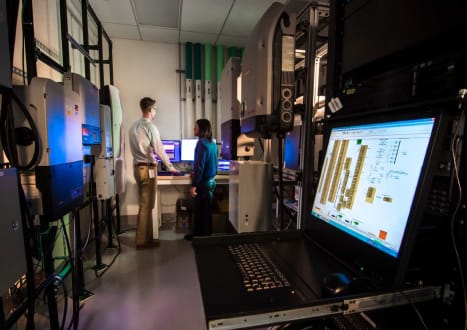


Top CompTIA Certification Exams
Site Search:



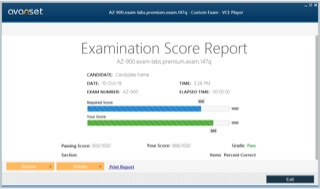
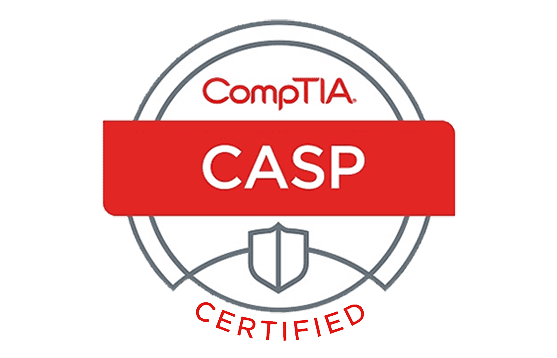
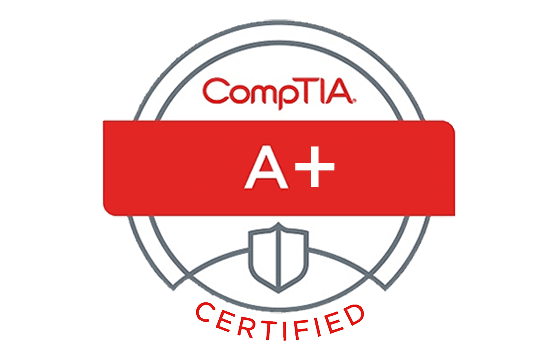
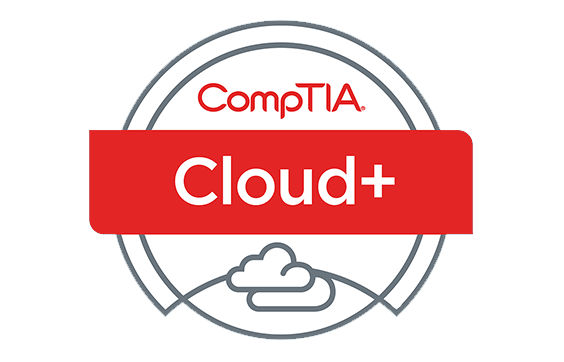
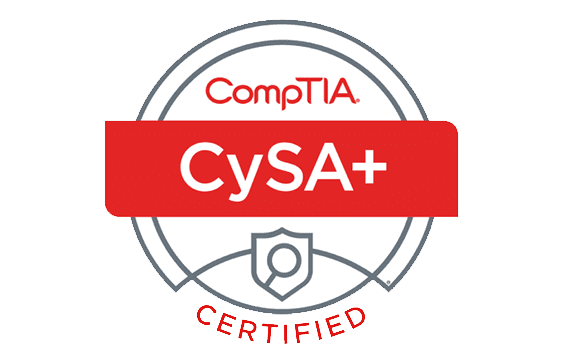
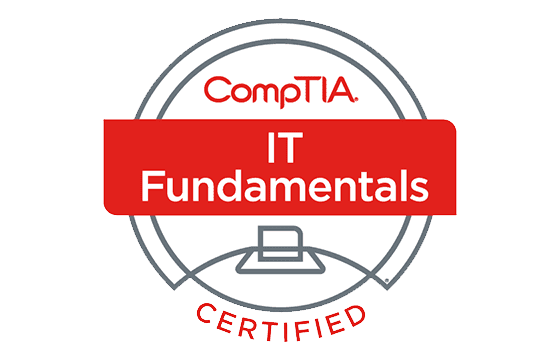

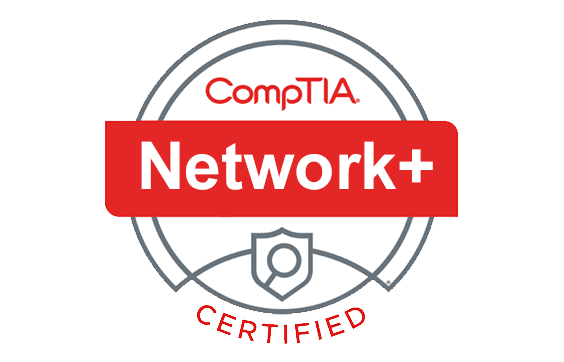

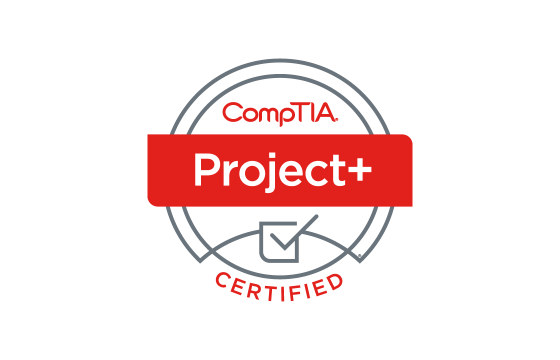
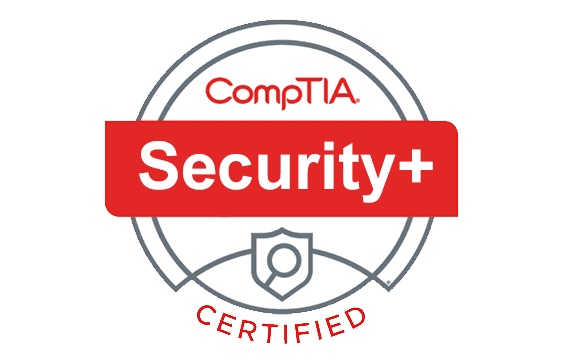





I can confirm that the CompTIA Network+ practice test provided by ExamCollection really looks alike with the real exam. The questions with answers are very helpful resources for practice. I recommend!
The free CompTIA Network+ VCE files are really helpful. I used the questions contained in it to test my readiness for the exam in order to study further for those areas, which need further emphasis. I encountered most of the questions during my exam. This practice test helped me to attain the passing score.
The exam is simple, I did it a few weeks ago and passed. However, there is no exam, which is easy without prior preparation. Every test requires the candidate to study hard. Supplement what you have learned from books and other training resources by studying several practice tests relevant to this exam, and you will be able to pass.